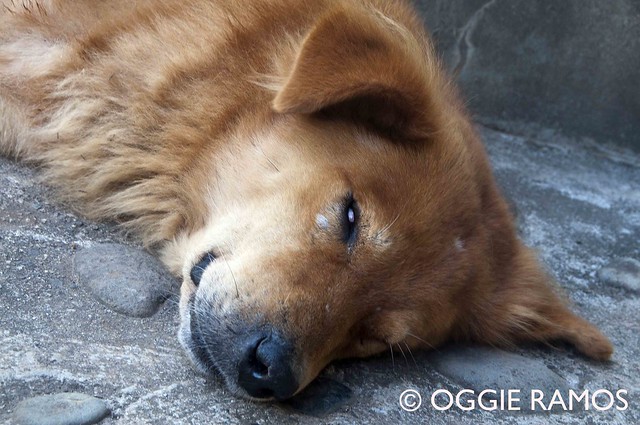 |
| Cows in the mist on Komanbaneng Peak |
Funny but the original plan was to head to the Kiltepan view deck anew for a no-frills, just chilling-out sunrise experience though we knew the "privatization" and fencing of the road leading to Tekeng peak could become a complication. A trip to the SaGGaS (Sagada Genuine Guides Association) headquarters on our first afternoon back in Sagada and talking to loquacious guide, Yakie, convinced us to try an off-the-beaten track, 18 kilometer circuit not yet popular with visitors. The circuit commences with a hike up Kamanbaneng Peak, moving southwards to Kaman-utek (Blue Soil hill), then southwest to Balangagan Cave in Suyo, before heading back to the town on the road passing through Sumaging.
 |
| Panoramic foggy view |
We've been caught up in shooting and admiring the surreal landscape that we didn't notice their coming -- cows emerging stealthily from the mist to graze. Unbeknownst to us, they were later joined by three wild horses as pointed out by our guide, Garreth. When the morning sun unmasked the surroundings, it was breathtaking to see the mountains of Bontoc, the distant terraces below, and more cows grazing on the limestone cliffs. Garreth gleefully shares that more and more of the pine trees have grown from the days of their youth though at the expense of the grass formerly used by the locals as roof thatching material. Maybe that helps explain the popularity of using GI sheets, a poor insulator though durable material for roofing in these parts.
 |
| Kaipitan, a gateway to the limestone cliffs and watering hole for grazing cows |
 |
| Kaman-utek or Blue Soil blue hill under a cloudy blue sky |
 |
| Entrance to Balangagan Cave |
 |
| Sleepy Hamlin roused by Og |
Info: We were privileged to have Garreth, head of Sagada Genuine Guides Association (SaGGAs), along with Yakie, as our guides for our Kamanbaneng - Kaman-utek- Balangagan adventure. You may reach him via mobile 0929-5569553 or head to the SaGGAs office along the main road in the poblacion.
